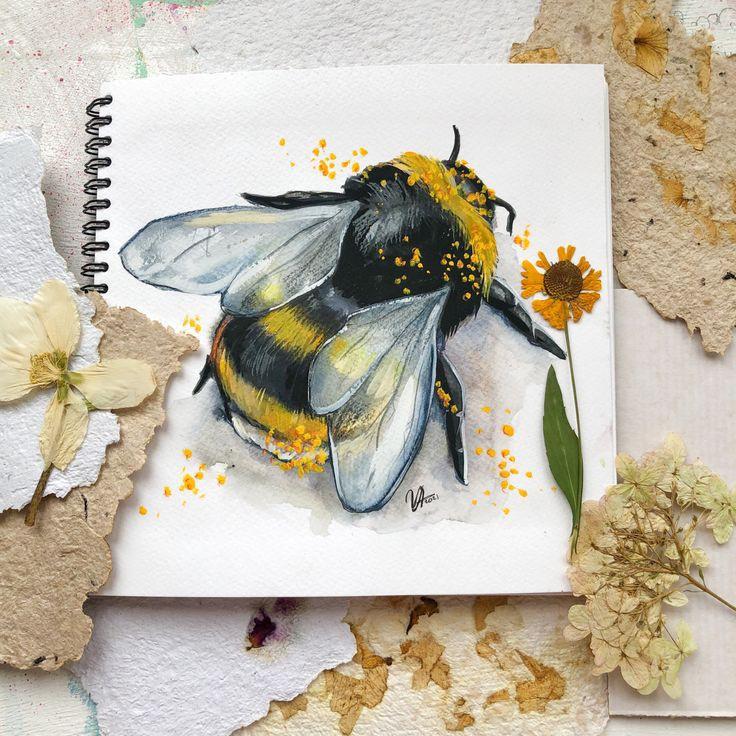Make the Transition from Colored Pencils to PWatercolor encils


Art is a journey, filled with unexpected twists and turns. One of these might be the jump from the familiar comfort of colored pencils to the enchanting world of watercolor pencils.
But don't worry! This transition is easier than you think. It's like learning a new dance: all you need are the right steps, a bit of patience, and of course, a whole lot of fun!
 Image Credit: Derwent
Image Credit: Derwent
Embrace the Difference
First off, let's celebrate the fact that watercolor pencils are not just "colored pencils with a twist." They're a unique, enchanting art medium, distinct and beautiful in their own right. Colored pencils are renowned for their precision and control, allowing you to capture every detail with accuracy.
But with watercolor pencils, a different kind of magic awaits. They give you the freedom to play, experiment, and discover new creative realms. They ask you to welcome surprises and not fear the unexpected. With just a touch of water, your carefully laid down pencil strokes can blossom into dreamy washes of color, creating an effect that's both whimsical and stunning.
So, put on your artist's smock, and roll up those sleeves, because things might get a bit splashy as you dive into this wonderful world of watercolor pencils!
Feel the Water
Dipping your toes (or in this case, your pencils) into the water might feel a bit strange at first. It's like entering a new world where colors dance and blend with each brushstroke. You can start by laying down some color on a scrap piece of paper, perhaps a patch of blue, a streak of red, or a splash of yellow.
Then, wet a paintbrush and gently sweep it across the pencil marks. Watch as the lines soften, the colors blur and merge together, forming new shades and gradients, like a melting rainbow. This fluidity, this delightful unpredictability, it's where the magic of watercolor pencils truly happens.
Layer Up
Just like you build color with colored pencils through meticulous layers, you can do the same with watercolor pencils. But the process is slightly different, and the results nothing short of enchanting! Start with a light touch, making soft strokes to lay the groundwork.
Then gradually add more color, slowly building intensity. Remember, you can always add more, but it's a bit tricky to take color away. Once you're happy with your layers, it's time to introduce water.
And here's the exciting part: when you add water, those individual layers meld together into a seamless wash, creating beautiful, deep hues and gradients that are a treat to the eyes.
Play with Techniques
With watercolor pencils, your creativity is truly your playground. There are several techniques you can explore to bring your vision to life.
One of the most popular methods is the wet-on-dry technique, where you wet the pencil marks after they're applied. This gives you more control over the watercolor effect and is perfect for adding details.
On the other hand, the wet-on-wet technique, where you wet the paper first and then draw on it, results in softer, more diffused colors.
This method is excellent for creating dreamy backgrounds or achieving an impressionistic effect. Experiment with both techniques and discover which one resonates with your artistic style.
Mix It Up
As with any new skill or endeavor, mastering watercolor pencils requires patience. The journey may be filled with bumps—maybe your colors look muddy one day, or perhaps your paper warps or tears. Don't be disheartened!
These are all part of the learning process, the stepping stones to your growth as an artist. Each challenge is an opportunity to learn and improve. Be patient with yourself, and more importantly, enjoy the journey. The joy of creating art lies as much in the process as in the final product. So embrace the process, let your creativity flow, and most importantly, have fun along the way!
Practice, Practice, Practice
Finally, the best way to get comfortable with watercolor pencils is to use them often. Keep a sketchbook for daily doodles or embark on bigger projects. With each stroke, you'll become more familiar with how these wonderful pencils behave.
Transitioning from colored pencils to watercolor pencils might feel like a leap into the unknown. But trust me, it's a leap worth taking. The possibilities are endless, and the results? Well, they're just watercolor-fully amazing!
So go ahead, pick up those watercolor pencils, and let your creativity flow. You're in for an exciting ride!
Need Help To Pick the Best Watercolor
Pencils?
As with any medium, the quality of your tools can greatly affect your results.
The best watercolor pencils have a few key qualities to look out for. High-quality pencils will offer vibrant, rich colors that translate well when wet.

Image Credit: Amazrock Brands Editorial
They should also have a smooth texture for comfortable sketching and flawless color lay-down. The pencils' ability to blend well is crucial, as this allows you to create a myriad of hues and effects.
Finally, look for pencils with strong, durable leads that won't break easily but can be sharpened for precision work. While higher quality often comes with a higher price tag, consider it an investment in your artistic journey.
Take your time to research and choose the best set that fits within your budget and suits your creative style. Remember, the magic isn't just in the pencil—it's in the hands that wield them!
Make the Transition from Colored Pencils to PWatercolor encils




 Image Credit: Derwent
Image Credit: Derwent



